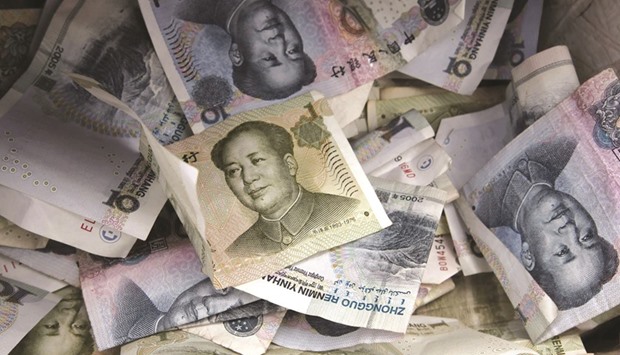China’s weakening currency has triggered an increase in the amount of cash leaving the country, according to analysis by Goldman Sachs Group.
The US bank estimates $49bn worth of foreign-exchange outflows in June, compared with $25bn in May. Goldman’s analysis came after China’s top currency regulator released data showing sustained demand for foreign-exchange. The yuan fell 1.1% against the dollar and 2.2% versus a trade-weighted index last month.
“While this is still well below the pace of foreign-exchange outflow in December and January, where our measure of FX outflow was about $126bn per month, it suggests that the depreciation” of the yuan affected sentiment, economists led by Hong Kong-based MK Tang wrote in a note.
The nation experienced a record flood of capital outflows in 2015 and early this year after authorities allowed the exchange rate to weaken, prompting companies to pay down foreign debt and investors to move money overseas. The flows subsided as the yuan’s declines slowed and authorities enforced strict cross-border capital controls.
Policymakers have gone to great lengths to discourage outflows and depreciation bets, ordering banks to stop sending money overseas and driving overnight offshore borrowing costs in the yuan to an implausible 66.8% in January.
The People’s Bank of China has this week also tried to prevent the yuan from slipping beyond 6.7 per dollar. The onshore yuan was set on Friday to end the year’s longest run of weekly losses, with the suspected central bank support negating pressures from a rising dollar and prompting concern about China’s commitment to market forces.
The PBoC strengthened the yuan’s daily fixing, which limits onshore moves to 2% on either side, twice this week even as a gauge of the greenback advanced. The yuan was last trading at 6.6735 per dollar.

China’s weakening currency has triggered an increase in the amount of cash leaving the country, according to analysis by Goldman Sachs.


